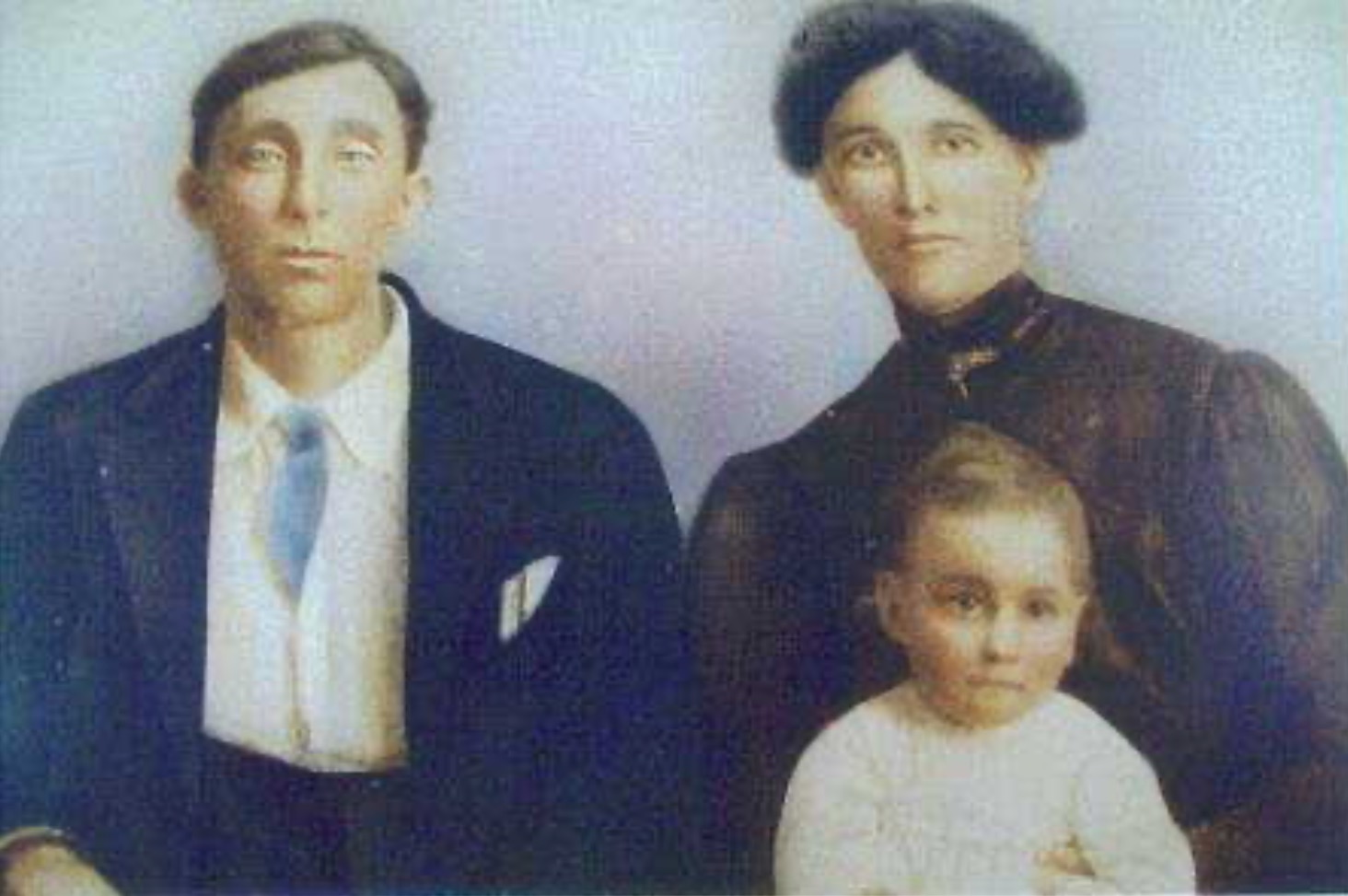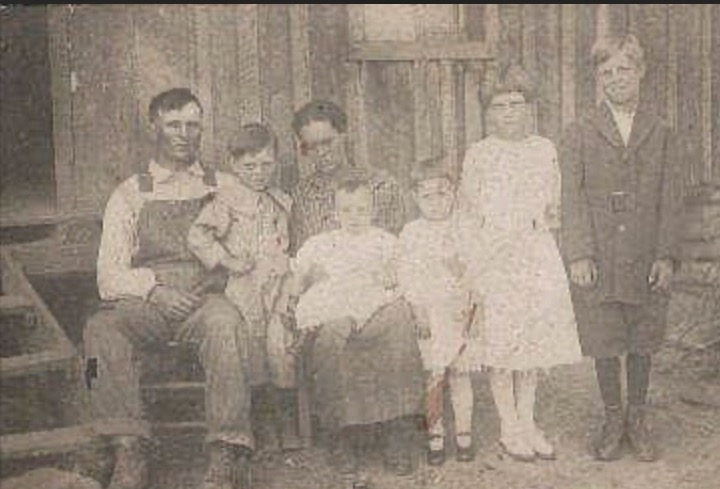I wondered which project I would write about in my president's letter in a 2021 genealogy newsletter. While deliberating, a mysterious package from my husband’s brother and sister-in-law arrived. We opened it excitedly, wondering what this large box might contain. What we found has led me on a new genealogical journey.
They sent us a beautiful 169-year-old, elaborately designed, handmade cotton or linen and wool coverlet. It was woven in North Liberty, Knox County, Ohio. My husband’s mother, Ruth, called it the “Keller coverlet. ” A photograph of his mother with the coverlet is labeled as such.
The coverlet was kept in a cherrywood cupboard in my husband’s great-grandfather Daniel’s home. Daniel Keller built this house in about 1874. Due to the coverlet's 1852 date, likely, it was also in Daniel’s father, Henry's home. Daniel wasn't born until December 1851. Whether it belonged to Henry's father, Benjamin, is unknown. Daniel and Henry lived in North Liberty, Pike Township, Knox County, Ohio. Benjamin lived in Fairfield County.
Daniel Keller, collection of Stephen Studebaker
A corner of the coverlet on the coverlet has the name Jacob and what I believed was Aylor or Saylor. I thought these were two first names, and the Keller last name was not on the coverlet. I researched all of the Kellers. While there were many Jacob Kellers, none lived in this part of Ohio, let alone in Knox County. This made me rethink my assumption. It soon became evident that this was the name of the weaver. Research on coverlets substantiated this.
Coverlets started being used in the late 1700s in America. They became prevalent in the mid-1800s. Initially, women probably made them at home using smaller looms. Later, men and women were weaving coverlets. Sometimes, traveling weavers would come to town, set up temporary shops, and weave to order. Coverlets would be made in two pieces and then sewn together. Patterns were generally geometric. Later, figured and fancy designs became popular and were almost always made by professional weavers, who were men. These were made in factories or by individuals. Many figured and fancy weavings, such as the Keller coverlet, would include inscriptions with the weaver’s name and his location.
The Kalida Venture, Kalida, Ohio, Fri, Feb15,1850, Page 3, Col 5.
If the coverlet had come into the Keller family when it was new, Henry may have given it to his wife, Elizabeth, to commemorate the birth of his first child, Daniel. Or possibly Benjamin, Henry's father, gave it to them. Daniel may have been gifted the coverlet upon the date of his first marriage or even the birth of his first child with his wife. We will never be able to prove any of these theories.
Henry Keller, collection of Stephen Studebaker
Coverlets like the Keller one kept people warm on cold winter nights and made the beds look special during the day. Depending on which Keller was the original owner, this coverlet has been in the Keller / Studebaker family for four to six generations. It will be passed on through the family for many generations to come. See http://www.coverletmuseum.org/coverlet.htm for more information.
Originally published in Generations, the newsletter of the Southwest Colorado Genealogical Society. Updated and edited.














